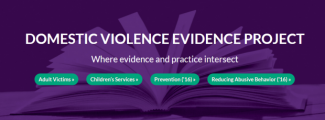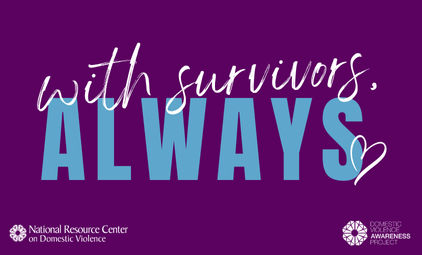Increasingly, domestic violence (DV) victim advocacy programs are being asked by funders and policy makers to describe not just whether and how their services are “evidence-based,” but what theory of change guides their work. In order to help DV programs respond to both of these demands, the National Resource Center on Domestic Violence (NRCDV) has created an online resource center that houses a great deal of free and accessible resources.
Among other things, The DV Evidence Project houses a theory of change that programs can use to demonstrate the process through which their services result in long-term benefits for survivors and their children. A theory of change is an empirically justified explanation of how and why one expects a desired change to occur. It involves identifying the desired long-term goals (i.e., what are we hoping to accomplish?), and then working backwards to identify how to achieve measurable outcomes tied to the goals (i.e., how do we get there?). DV programs engage in a wide range of activities designed to have a positive impact on the safety and well-being of both survivors and their children. In addition to helping survivors protect themselves and their children from current and future abuse, programs also work to increase survivors’ sense of self-efficacy as well as their hope for the future, and directly increase their access to community resources, opportunities, and supports (including social support). Staff recognize that well-being is not independent from community-level factors, and—in addition to their work with individual survivors—they engage in a variety of efforts to create communities that hold offenders accountable, promote justice and survivor safety, and provide adequate resources and opportunities for all community members. They accomplish these objectives through system-level advocacy efforts, prevention activities, community education activities, and collaborative community actions.















